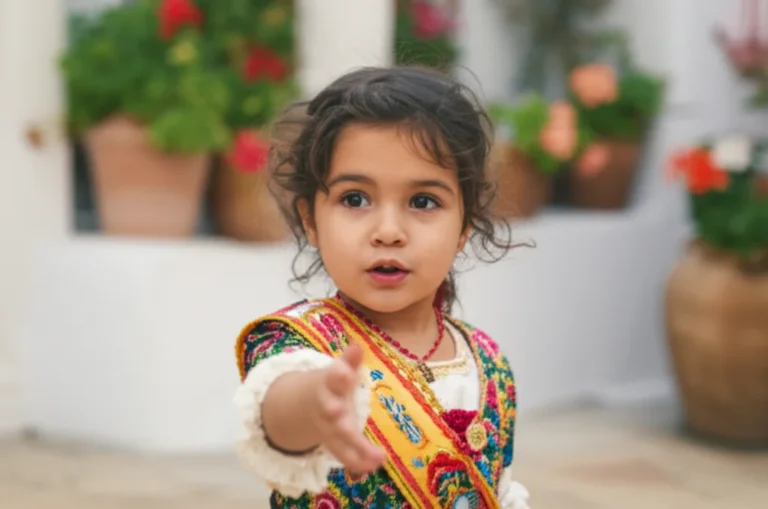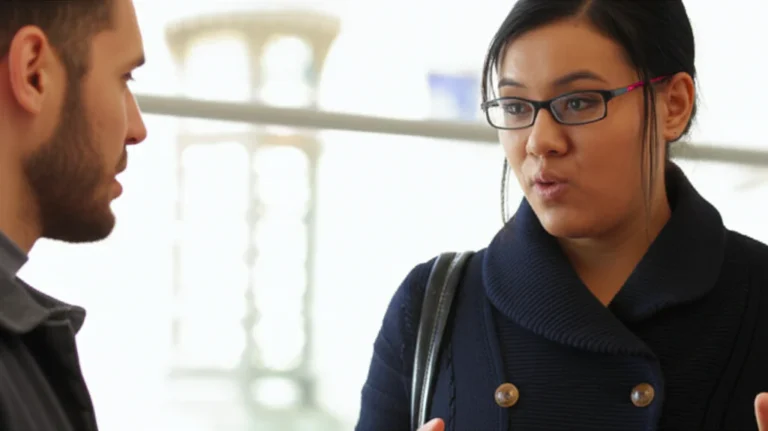Support our educational content for free when you purchase through links on our site. Learn more
45+ Ways to Say Good Morning in Spanish (2025) ☀️
Have you ever wondered why the Spanish phrase for “good morning” is plural—buenos días—and not singular? Or how locals in Argentina casually say buen día instead? Whether you’re a beginner eager to master the basics or a seasoned learner craving authentic, regionally flavored greetings, this guide has you covered.
At Spanish Scholar™, we’ve gathered over 45 creative, affectionate, formal, and playful ways to say good morning in Spanish, plus insider tips on pronunciation, cultural nuances, and digital communication. We’ll also reveal how to use these greetings like a native, including when to switch to buenas tardes or buenas noches. Curious about how a simple greeting can open doors and spark friendships across Spanish-speaking countries? Keep reading to unlock the secrets behind the words and start your day the Spanish way!
Key Takeaways
- Buenos días is the classic, plural phrase meaning “good morning,” rooted in a warm cultural blessing wishing someone good days ahead.
- There are 40+ alternative greetings tailored for casual chats, romantic moments, formal settings, and regional variations.
- Timing matters: use buenos días until noon, then switch to buenas tardes and buenas noches accordingly.
- Non-verbal cues like eye contact, smiles, and gestures are essential to sounding natural and polite.
- Digital greetings have their own flair—learn how to say good morning in texts, emails, and social media.
- Personalized tutoring on platforms like Preply can dramatically accelerate your mastery of Spanish greetings and pronunciation.
Ready to greet the day like a true native speaker? Let’s dive in!
Table of Contents
- ⚡️ Quick Tips and Fun Facts About Saying Good Morning in Spanish
- 🌅 The Origins and Cultural Significance of “Buenos Días” in Spanish-Speaking Countries
- 🗣️ How Do You Say “Good Morning” in Spanish? The Basics Explained
- 🔢 40+ Creative and Contextual Ways to Say “Good Morning” in Spanish
- 💬 Mastering Other Essential Spanish Greetings for Every Occasion
- ⏰ When and How to Use “Buenos Días” Like a Native Speaker
- 🌍 Regional Variations: How Different Spanish-Speaking Countries Greet the Morning
- 📱 Using “Good Morning” in Spanish in Digital Communication and Social Media
- 🎯 Tips for Perfect Pronunciation and Natural Intonation of “Buenos Días”
- 📚 Learning Resources: Apps, Books, and Tutors to Boost Your Spanish Greetings
- 🚀 How Preply Spanish Tutors Can Accelerate Your Morning Greetings Mastery
- 🤔 Frequently Asked Questions About Saying Good Morning in Spanish
- 🔚 Conclusion: Start Your Day Right with Perfect Spanish Greetings
- 🔗 Recommended Links for Expanding Your Spanish Language Skills
- 📑 Reference Links and Credible Sources
Here is the main content for your blog post, crafted by the expert team at Spanish Scholar™.
⚡️ Quick Tips and Fun Facts About Saying Good Morning in Spanish
Welcome, language lovers! We at Spanish Scholar™ are thrilled to kickstart your journey into the sunny world of Spanish greetings. Before we dive deep, let’s get you started with some quick, bite-sized info. Think of this as your morning espresso shot of Spanish knowledge!
Ever wondered why “good morning” in Spanish is plural? It’s a fantastic question that even stumps some intermediate learners. Let’s clear that up and share some other tidbits.
| Quick Fact 🧐 | The Lowdown 👇 |
|---|---|
| The Go-To Phrase |
Buenos días is your universal, can’t-go-wrong way to say “good morning.” |
| Plural Puzzle | Días is plural (“days”). Why? One popular theory suggests it’s a shortened version of an old blessing: “Buenos días os dé Dios,” meaning “May God give you good days.” So, you’re not just wishing someone a good morning, but a series of good days! How lovely is that? |
| Timing is Everything | Use Buenos días from sunrise until noon. After that, you’ll switch to Buenas tardes (Good afternoon). |
| Casual Shortcut | In a hurry or with friends? Just say ¡Buenas! It’s a super common, friendly shorthand that works for morning, afternoon, or evening. |
| Singular Surprise | In some parts of Latin America, you’ll hear Buen día (Good day). It’s singular and often used as a friendly alternative throughout the day. |
We’re just getting warmed up! These little details are what separate a textbook learner from someone who can navigate a real conversation. Ready to uncover the stories behind these greetings?
🌅 The Origins and Cultural Significance of “Buenos Días” in Spanish-Speaking Countries
Greetings are more than just words; they’re a cultural handshake, a way of acknowledging and respecting the person in front of you. In the Spanish-speaking world, this is especially true. A warm, genuine greeting can open doors and create instant connections. For more on this, check out our guide on Spanish Cultural Insights.
As the Berlitz blog points out, the phrase buenos días likely comes from an old Spanish prayer, “Buenos días os dé Dios” (“May God give you good days”). This historical tidbit reveals something beautiful about the culture: the greeting is rooted in a genuine wish for the other person’s well-being, not just for the morning, but for the days to come.
In many Spanish-speaking countries, it’s considered polite to greet everyone when you enter a room, whether it’s a small shop, a doctor’s waiting room, or an elevator. A simple “Buenos días” to the room at large is a sign of good manners. Forgetting to do so can sometimes be seen as unfriendly or rude. It’s a small act that fosters a sense of community and shared space.
🗣️ How Do You Say “Good Morning” in Spanish? The Basics Explained
Alright, let’s get down to brass tacks. The most direct and universally understood way to say “good morning” in Spanish is:
Buenos días (pronounced: BWEN-ohs DEE-ahs)
Let’s break it down:
- Buenos: This is the masculine plural form of the adjective bueno, meaning “good.”
- Días: This is the plural form of día, the noun for “day.”
So, literally, you’re saying “Good days.” As we mentioned, this phrase is your trusty tool from the moment the sun rises until about 12:00 PM. It’s appropriate for almost any situation, from formal to informal. Whether you’re greeting your boss, a shopkeeper, or a new acquaintance, Buenos días is a perfect choice.
🔢 40+ Creative and Contextual Ways to Say “Good Morning” in Spanish
While Buenos días is your go-to, why stop there? Sounding like a local means having a few extra phrases up your sleeve. Here at Spanish Scholar™, we believe in giving you the tools for real-world Spanish Conversation Practice. So, we’ve compiled a list that goes beyond the basics, with over 40 ways to greet the day! This is a more comprehensive list than you might find in other articles, like our friendly competitors’ post on ¿Cómo Say D Say Good Morning in Spanish? ☀️ 30+ Fresh Ways to Greet (2025).
For Everyday & Casual Situations
- ¡Buenas! – The quick, friendly, all-purpose greeting.
- ¡Buen día! – “Good day!” A warm alternative, very common in countries like Argentina.
- ¿Cómo amaneciste? – “How did you wake up?” This is a very common and caring way to ask “How are you this morning?” in many parts of Latin America.
- ¿Qué tal la mañana? – “How’s the morning?”
- ¿Cómo va tu mañana? – “How is your morning going?” A great phrase for colleagues.
- ¡Arriba! – “Get up!” A short and energetic way to wake someone up.
- ¡A levantarse! – “Time to get up!”
- ¡Ya es de día! – “It’s already daytime!”
- ¡Ya amaneció! – “The sun’s already up!” or “It’s already dawn!”
- ¿Listo para el día? – “Ready for the day?”
For Your Loved Ones ❤️ (Romantic & Affectionate)
- Buenos días, mi amor – “Good morning, my love.” A classic for a reason!
- Buenos días, cariño – “Good morning, dear/honey.”
- Buenos días, mi vida – “Good morning, my life.”
- Buenos días, mi sol – “Good morning, my sun.” ☀️
- Buenos días, guapo/guapa – “Good morning, handsome/beautiful.”
- Buenos días, hermoso/hermosa – “Good morning, gorgeous.”
- Buenos días, princesa – “Good morning, princess.”
- Buenos días, corazón – “Good morning, my heart.”
- Despierta, bella durmiente – “Wake up, sleeping beauty.” A playful and charming phrase.
- ¿Soñaste con los angelitos? – “Did you dream of little angels?” An incredibly sweet and traditional question to ask children or a partner.
For Formal & Professional Settings 👔
- Buenos días a todos – “Good morning to all/everyone.” Perfect for starting a meeting or class.
- Buenos días, señor/señora/señorita – “Good morning, sir/madam/miss.” The gold standard of politeness.
- Buenos días, señoras y señores – “Good morning, ladies and gentlemen.” For addressing a formal audience.
- Tenga usted un buen día – “Have a good day” (formal ‘you’).
- Saludos – “Greetings.” A neutral yet formal option, often used in writing.
- Es un placer saludarle esta mañana – “It’s a pleasure to greet you this morning.”
Inquiring About Their Night’s Rest
- ¿Cómo dormiste? – “How did you sleep?”
- ¿Dormiste bien? – “Did you sleep well?”
- ¿Descansaste? – “Did you rest?”
- ¿Descansaste bien? – “Did you rest well?”
- Espero que hayas dormido bien – “I hope you slept well.”
Fun, Playful & Motivational Greetings
- ¡Levántate y brilla! – The Spanish version of “Rise and shine!”
- ¡A comerse el mundo! – “Let’s go eat the world!” (A way of saying “Let’s go seize the day!”)
- ¡Feliz día! – “Happy day!” A versatile and cheerful greeting.
- ¡Qué tengas un buen día! – “Have a good day!” A warm and common wish.
- ¡Que tengas una bonita mañana! – “Have a beautiful morning!”
- ¡Qué hermosa mañana! – “What a beautiful morning!” A great way to start a conversation about the weather.
- ¡Arriba, dormilón/dormilona! – “Get up, sleepyhead!”
- Hora de levantarse – “Time to get up.”
- El sol ya salió – “The sun is already out.”
- ¡Despierta, despierta! – “Wake up, wake up!”
💬 Mastering Other Essential Spanish Greetings for Every Occasion
Knowing how to say “good morning” is fantastic, but the sun eventually sets! To keep the conversation flowing all day long, you need to know the other essential greetings. Think of them as a trio:
- ☀️ Buenos días (Good morning): Use from sunrise until noon.
- 🌤️ Buenas tardes (Good afternoon): Use from noon until sunset.
- 🌙 Buenas noches (Good evening / Good night): Use after sunset.
An interesting quirk of Buenas noches is that it works for both “hello” and “goodbye.” You can use it to greet someone when you arrive at a restaurant for dinner, and you can also say it to your family before you go to bed. It’s a versatile phrase that covers the entire evening and night period.
⏰ When and How to Use “Buenos Días” Like a Native Speaker
Using the right words is only half the battle. The other half is context, tone, and non-verbal cues. This is where you truly start to sound natural.
The Time Window
As we’ve said, Buenos días is for the morning, typically until 12 PM. But what if it’s 12:05 PM? Don’t sweat it! There’s a bit of a gray area. In Spain, where lunch is later (around 2-3 PM), you might hear Buenos días used up until lunchtime. In Latin America, the switch to Buenas tardes often happens more promptly after noon. When in doubt, listen to what the locals are saying.
Formality and You
- ✅ Formal: When addressing someone older, a person in authority (like a doctor or teacher), or someone you don’t know, it’s best to stick with the full Buenos días. You can add their title for extra respect: Buenos días, Doctora Martinez.
- ✅ Informal: With friends, family, and peers, you have more freedom. ¡Buenas! or ¡Buen día! are excellent, relaxed options.
The Power of Non-Verbal Communication
A greeting in Spanish is rarely just words. It’s an entire performance!
- Eye Contact: Always make eye contact. It shows sincerity and confidence.
- A Smile: A warm smile is a universal language that makes any greeting better.
- Gestures: Depending on the region and your relationship with the person, a greeting might be accompanied by:
- A firm handshake (common in professional settings).
- One kiss on the cheek (in Spain, between women or a man and a woman).
- Two kisses on the cheeks (also common in Spain).
- A light hug or pat on the back (between friends, especially men in Latin America).
🌍 Regional Variations: How Different Spanish-Speaking Countries Greet the Morning
Spanish is the official language in 20 countries, so you can bet there are some fascinating regional differences! While Buenos días is understood everywhere, some local flavors can make you sound even more authentic. Expanding your Spanish Vocabulary with these regionalisms is a fantastic goal.
| Country/Region | Common Morning Greeting(s) | Cultural Nuance |
|---|---|---|
| Spain 🇪🇸 | Buenos días, ¡Buenas! | The “two kisses” greeting is very common here. |
| Mexico 🇲🇽 | Buenos días, ¿Qué onda? (very informal, “What’s up?”), ¿Quiubo? (slang) | Greetings are often warm and expressive. |
| Argentina 🇦🇷 | Buen día | The singular form is much more common here than in Spain. |
| Colombia 🇨🇴 | Buenos días, ¿Qué más? (“What else?” used like “How are you?”), ¿Quiubo? | Colombians are known for being particularly polite and friendly. |
| Caribbean (Cuba 🇨🇺, Puerto Rico 🇵🇷) | Buenos días, ¿Qué bolá? (Cuba, slang for “What’s up?”) | Greetings are often lively and accompanied by music and energy. |
📱 Using “Good Morning” in Spanish in Digital Communication and Social Media
How do you say good morning when you’re not face-to-face? Let’s talk texting and social media etiquette.
- Texting/WhatsApp: With friends, it’s common to shorten things. You might see “bns ds” as a quick abbreviation for buenos días. A simple “Hola, buen día” is also very common.
- Emails:
- Formal: Always start with “Buenos días, [Name]” or “Estimado/a [Name],” (Dear [Name]).
- Informal: A simple “Hola [Name], buenos días” works perfectly.
- Social Media: On platforms like Instagram or X (formerly Twitter), you might post a picture of your morning coffee with the caption “¡Feliz día a todos!” ☀️☕️. Using emojis is very common and adds a friendly touch.
🎯 Tips for Perfect Pronunciation and Natural Intonation of “Buenos Días”
Want to nail the pronunciation? Let’s break it down.
- Bue-nos: The “b” is soft, almost like a “v” sound in English. The “ue” vowel combination is quick, like “bweh-nos.”
- Dí-as: The “d” is also soft. Place your tongue against the back of your top teeth, not the roof of your mouth. The emphasis is on the “í” – DEE-ahs.
Pro Tip: Listen and repeat! One of the best ways to learn is by mimicking native speakers. The song in the featured video in this article is a great, simple tool for beginners, as it repeats key phrases like “Buenos Días” and “¿Cómo estás?” with clear pronunciation. Watching Spanish-language shows on Netflix or listening to music can also tune your ear to the natural rhythm of the language.
📚 Learning Resources: Apps, Books, and Tutors to Boost Your Spanish Greetings
Ready to take your Spanish Language Learning to the next level? There are some fantastic tools out there to help you practice your greetings and beyond.
Language Learning Apps
- Duolingo: Great for beginners, with gamified lessons that make learning vocabulary fun.
- Babbel: Focuses on conversational learning, helping you build practical sentences from the start.
- Memrise: Uses videos of native speakers to help you understand real-world accents and pronunciation.
👉 Shop Language Learning Apps:
- Duolingo: Google Play | Apple App Store
- Babbel: Google Play | Apple App Store
- Memrise: Google Play | Apple App Store
Books and Workbooks
For those who love a more traditional approach, workbooks from publishers like McGraw Hill or Barron’s can provide structured grammar and vocabulary exercises. Check out our full list of recommendations in our Spanish Language Resources section.
🚀 How Preply Spanish Tutors Can Accelerate Your Morning Greetings Mastery
While apps and books are fantastic, nothing beats practicing with a real person. This is where online tutoring platforms shine. A competitor we admire, Preply, offers personalized 1-on-1 lessons with online Spanish tutors. This is an excellent way to get real-time feedback on your pronunciation and practice the nuances of conversation.
Working with a tutor allows you to:
- Practice speaking in a safe, supportive environment.
- Ask specific questions about culture and context.
- Receive instant corrections on your accent and grammar.
- Role-play real-life scenarios, like greeting someone in a café or at a business meeting.
As the Preply article notes, a tutor can help you master the nuances of the language and sound more like a local. At Spanish Scholar™, we wholeheartedly agree that personalized instruction is one of the fastest tracks to fluency.
🔚 Conclusion: Start Your Day Right with Perfect Spanish Greetings
There you have it—a comprehensive, sunny stroll through the vibrant world of saying “good morning” in Spanish! From the classic and ever-reliable Buenos días to over 40 creative, affectionate, and formal alternatives, you’re now equipped to greet anyone, anywhere, anytime with confidence and flair.
Remember the little secret behind the plural días? It’s not just about the morning but wishing someone good days ahead—a beautiful cultural nuance that adds warmth to your greetings. Whether you’re chatting with a colleague, waking your partner with a sweet phrase, or sending a quick “¡Buenas!” to a friend, the right greeting sets the tone for the entire day.
We also unraveled how regional flavors spice up these greetings, from Argentina’s singular Buen día to Mexico’s lively ¿Qué onda?, and how digital communication has its own casual twists. Plus, mastering pronunciation and intonation will have you sounding like a native in no time.
If you’re serious about accelerating your Spanish skills, we highly recommend pairing your self-study with a personalized tutor on platforms like Preply. Nothing beats real-time feedback and cultural insights from a native speaker.
So, next time you wake up, why not greet the day in Spanish and brighten someone’s morning? After all, a simple Buenos días can open doors, spark smiles, and start conversations that last a lifetime.
¡Que tengas un buen día! 🌞
🔗 Recommended Links for Expanding Your Spanish Language Skills
Ready to dive deeper? Here are some top resources and products we recommend to boost your Spanish greetings and overall fluency:
-
Duolingo App:
Google Play | Apple App Store
A fun, gamified way to build vocabulary and practice greetings. -
Babbel App:
Google Play | Apple App Store
Focuses on conversational Spanish with practical phrases. -
Memrise App:
Google Play | Apple App Store
Uses native speaker videos to perfect your accent. -
Preply Spanish Tutors:
Find your tutor on Preply
Personalized 1-on-1 lessons to practice greetings and more. -
Recommended Spanish Learning Books on Amazon:
These resources will help you master not only greetings but the entire language journey. Happy learning!
🤔 Frequently Asked Questions About Saying Good Morning in Spanish
How do you say good morning in Spanish for different times of the day?
The classic Buenos días is used from sunrise until about noon. After that, switch to Buenas tardes (“good afternoon”) until sunset, and then Buenas noches (“good evening” or “good night”) after dark. Some regions have flexible cutoffs, but this is the general rule.
What are common Spanish greetings besides good morning?
Besides Buenos días, common greetings include:
- Buenas tardes (Good afternoon)
- Buenas noches (Good evening/night)
- ¡Hola! (Hello!)
- ¿Qué tal? (How’s it going?)
- ¿Cómo estás? (How are you?)
- ¡Qué onda! (What’s up? – informal, mostly in Mexico)
These greetings vary by formality and region.
How do you pronounce good morning in Spanish correctly?
Pronounce Buenos días as:
- Bue sounds like “bweh” (soft b/v sound)
- nos is quick and soft
- Dí has the stress, pronounced “DEE”
- as is soft and quick
Put together: BWEH-nos DEE-ahs. Practice with native audio to perfect intonation!
What is the difference between buenos días and buen día in Spanish?
Buenos días is plural and the standard greeting used in most Spanish-speaking countries. Buen día is singular and more common in countries like Argentina and Uruguay, used casually to mean “good day.” Both are polite, but buenos días is more universally recognized.
How can I use good morning in Spanish in a conversation?
Start with Buenos días when you meet someone in the morning. You can add a question like ¿Cómo amaneciste? (“How did you wake up?”) to show interest. For example:
“Buenos días, ¿cómo amaneciste hoy?”
This opens the door for friendly conversation and shows warmth.
Are there regional variations of saying good morning in Spanish?
Yes! For example:
- In Spain, Buenos días and ¡Buenas! are common.
- In Argentina, Buen día is preferred.
- In Mexico, informal greetings like ¿Qué onda? are popular.
Understanding these nuances helps you sound more natural.
What are some polite ways to greet someone in Spanish in the morning?
Use Buenos días plus a title or name for formality:
- Buenos días, señor/señora/señorita
- Buenos días, doctor/a
Adding a smile and eye contact enhances politeness.
How can I practice saying good morning in Spanish online?
Try these methods:
- Use apps like Duolingo, Babbel, or Memrise for daily practice.
- Take live lessons with native tutors on Preply for personalized feedback.
- Watch Spanish videos or listen to songs with greetings (e.g., “Buenos Días” by Wisin & Camilo).
- Practice with language exchange partners or join Spanish conversation groups online.
How important is non-verbal communication when greeting in Spanish?
Very important! Eye contact, a warm smile, and appropriate gestures (like a handshake or cheek kiss) complement your words and convey sincerity. This cultural aspect varies by country and relationship, so observing locals helps.
Can I use “good morning” greetings in Spanish in professional emails?
Absolutely! Start emails with Buenos días, [Name] or Estimado/a [Name] to maintain professionalism. It sets a polite tone and is standard in Spanish business correspondence.
📑 Reference Links and Credible Sources
- Berlitz: How to Say Good Morning in Spanish in 33 Fitting Ways
- Preply Blog: Good Morning in Spanish
- Duolingo Official Site: https://www.duolingo.com
- Babbel Official Site: https://www.babbel.com
- Memrise Official Site: https://www.memrise.com
- Preply Official Site: https://preply.com
- Amazon Books: Spanish Language Learning Books
For more cultural insights and vocabulary, visit Spanish Scholar™:
- Spanish Vocabulary
- Spanish Language Learning
- Spanish Conversation Practice
- Spanish Cultural Insights
- Spanish Language Resources
We hope this guide lights up your mornings and your Spanish journey! 🌞 ¡Hasta pronto!



